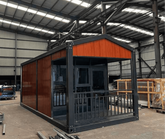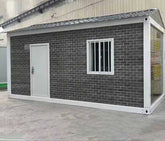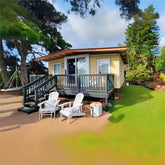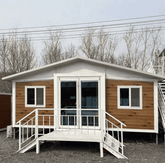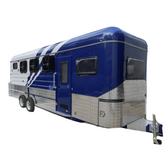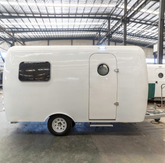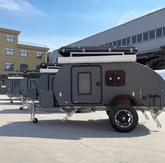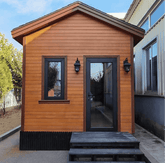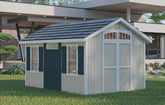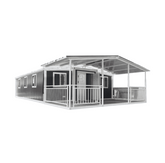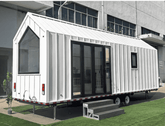Is It Legal to Live in a Tiny House Full-Time?
Living in a tiny house full-time sounds like a dream to many people. It offers less stress, lower bills, and a chance to live a simpler life. But the biggest question people ask is: Is it actually legal to live in a tiny house full-time? The answer isn’t simple. It depends on where you live, how your tiny house is built, and what local laws say. In this article, I’ll explain everything in easy words so you can clearly understand.
Why Tiny House Laws Are Confusing
Tiny houses are still a new idea compared to normal houses. Many cities and countries don’t have clear rules made just for tiny homes. So, tiny houses often fall into grey areas. Some places allow them, some don’t, and some have rules that make it difficult to live in one permanently.
Local governments usually care about three things:
- Minimum size of a home
- Where you place your home (zoning laws)
-
Whether it meets building and safety codes
So even if you own a tiny house, you might not be allowed to live in it full-time unless it follows these rules.
Types of Tiny Houses and Why It Matters
There are two main types of tiny houses:
Tiny House on Wheels (THOW):
These are built on trailers and can be moved from one place to another. Legally, they are often classified as recreational vehicles (RVs).
Tiny House on a Foundation:
These are built on permanent land, just like traditional houses. Legally, they are considered small residential homes or accessory dwelling units (ADUs).
The rules for both are different. A tiny house on wheels is often allowed only for camping or short stays, not full-time living. A tiny house on a foundation has a better chance of being approved for full-time living, but it still must follow local building codes.
Zoning Laws – Where You Can Place Your Tiny House
Zoning laws decide what type of building can be placed in a certain area. For example, some areas are for farms, some for apartments, and some for normal houses. Many cities do not allow tiny houses in residential areas because they are smaller than the required minimum size.
However, some places are becoming more open. Here are a few options tiny house owners often use:
- Living in a backyard (as an ADU) – If local laws allow, you can place a tiny house on someone’s land or your own backyard as a second small house.
- Tiny house communities – These are special areas designed for tiny homes where full-time living is allowed.
- Rural or farmland – These areas often have fewer rules, so it may be easier to live in a tiny house there.
If you don’t want to build one yourself, and you're looking for a place to purchase a ready-made tiny house, you can explore options here: https://kaldees.com/collections/tiny-homes-for-sale
Building Codes and Safety Rules
Even if you find land for your tiny house, it must follow building or RV codes depending on its type.
- Tiny houses on foundations must follow the International Residential Code (IRC) or local building codes.
-
Tiny houses on wheels usually must meet RVIA (Recreational Vehicle Industry Association) standards.
These rules ensure your tiny house is safe to live in — with proper plumbing, electricity, fire safety, and structure.
Some places now follow Appendix Q, a section added to the building code that talks specifically about tiny houses. It allows features like shorter stairs or sleeping lofts. But not all cities accept this code yet.
Can You Live Full-Time in a Tiny House on Wheels?
This is where many people face trouble.
In most cities, you cannot legally live full-time in an RV or tiny house on wheels parked in a backyard or street unless local laws allow it. Some areas allow you to stay temporarily, like for 30 or 90 days, but not permanently.
However, it may be possible if:
Your tiny house is parked in a licensed RV park or campground.
You live in a tiny house community.
You get special permission from local authorities or zoning boards.
Why Tiny House Living Is Becoming More Accepted
Even though the laws can be complicated, tiny house living is slowly becoming more accepted. Many cities are facing rising housing costs and homeless populations. So, governments are looking for cheaper and smaller housing solutions.
Places like California, Oregon, Colorado, Texas, and parts of the UK are making rules that support tiny homes. Some cities have changed zoning laws to allow tiny houses in backyards or as rental units.
Tips If You Want to Live in a Tiny House Legally
Here are some simple steps to follow:
Check local zoning laws before buying land or building a tiny house.
Ask your local building department if tiny houses are allowed in your area.
Decide between wheels or foundation based on what your area permits.
Get permits and inspections to avoid fines or being asked to move.
Join tiny house groups or communities to learn from people who already live this way.
Final Thoughts
So, is it legal to live in a tiny house full-time? Yes, it can be — but only if you follow the rules in your area. Laws are different everywhere, and that’s what makes it confusing.
Living in a tiny house full-time isn’t just about building a small home. It’s also about understanding land laws, zoning rules, and safety codes. With the right planning and research, it is possible to live your tiny house dream legally and peacefully.



